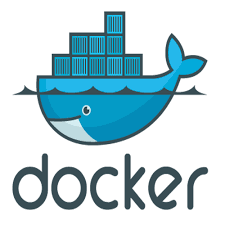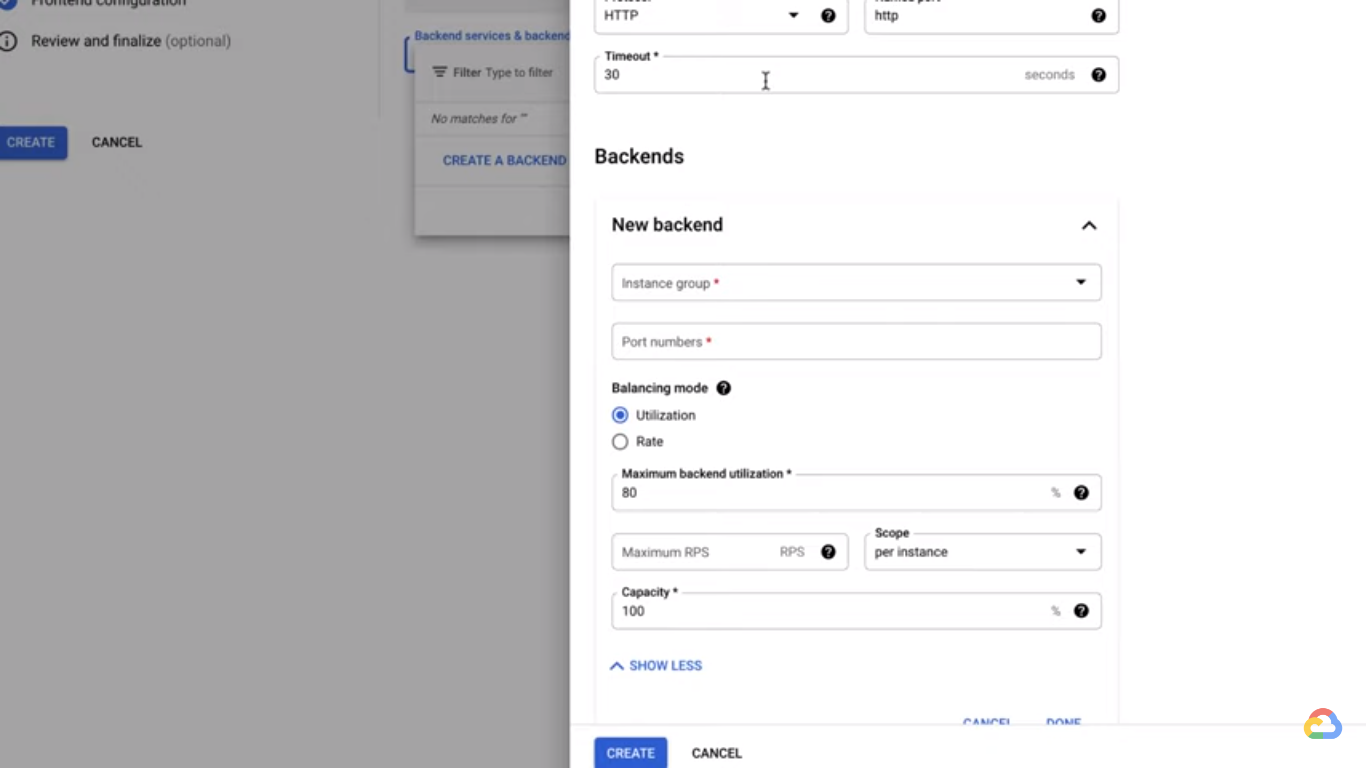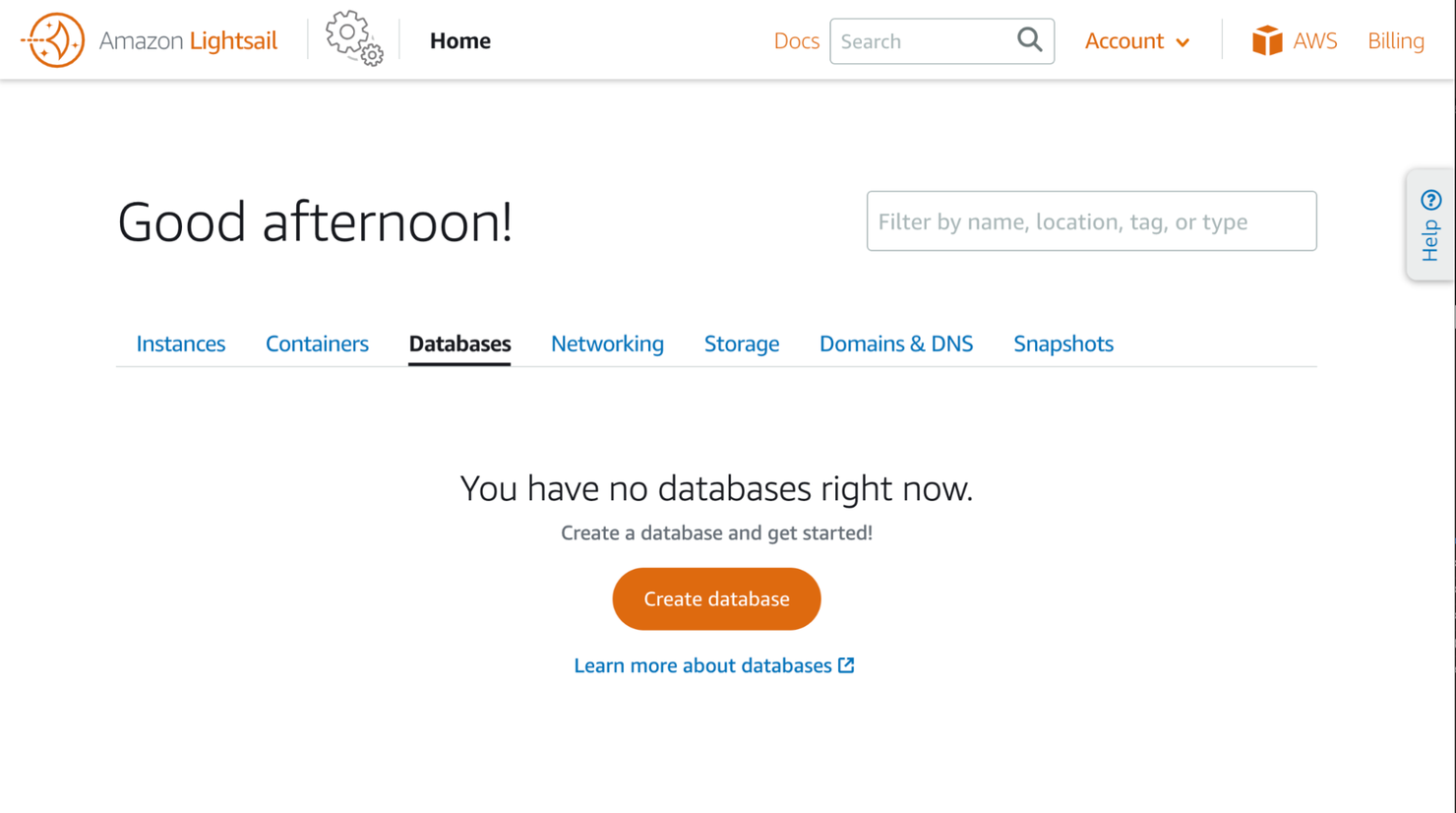Best Load Balancing Software Shortlist
Here’s my shortlist of the best load balancing software:
Our one-on-one guidance will help you find the perfect fit.
When your applications slow to a crawl or crash under heavy traffic, it’s more than frustrating—it’s a direct hit to user trust and your bottom line. Whether you're dealing with unpredictable traffic spikes, inefficient server utilization, or scaling challenges that feel like duct-tape fixes, the right load balancing software can change everything.
Over the past several years, I’ve worked hands-on with SaaS teams scaling high-traffic platforms and have personally tested dozens of load balancing solutions in real-world environments. I know what separates reliable tools from those that buckle under pressure—and how to spot the ones that offer seamless scaling, smart routing, and rock-solid uptime guarantees.
In this guide, I’ll break down the best load balancing software options based on features, ease of deployment, flexibility, and long-term value—so you can choose a solution that truly supports your team's growth and resilience.
Why Trust Our Software Reviews
We’ve been testing and reviewing SaaS development software since 2023. As tech experts ourselves, we know how critical and difficult it is to make the right decision when selecting software. We invest in deep research to help our audience make better software purchasing decisions.
We’ve tested more than 2,000 tools for different SaaS development use cases and written over 1,000 comprehensive software reviews. Learn how we stay transparent & check out our software review methodology.
Best Load Balancing Software Summary
This comparison chart summarizes pricing details for my top load balancing software selections to help you find the best one for your budget and business needs.
| Tool | Best For | Trial Info | Price | ||
|---|---|---|---|---|---|
| 1 | Best for network monitoring | 30-day free trial | Pricing upon request | Website | |
| 2 | Best for real-time analytics | Not available | From $50/user/month | Website | |
| 3 | Best for Microsoft integration | Free demo available | From $0.025/hour | Website | |
| 4 | Best for minimal hardware | Free trial available | From $0.425/hour | Website | |
| 5 | Best for small teams | Free demo available | From $0.015/hr | Website | |
| 6 | Best for global load distribution | Free demo available | From $0.025/hour | Website | |
| 7 | Best for flexible deployments | Free plan available | From $10/user/month (billed annually) | Website | |
| 8 | Best for AWS integration | Free plan available | From $0.0225/hour | Website | |
| 9 | Best for data storage | Free trial available | Available upon request | Website | |
| 10 | Best for beginners | Free trial available | From $0.025/hour | Website |
-

Docker
Visit WebsiteThis is an aggregated rating for this tool including ratings from Crozdesk users and ratings from other sites.4.6 -

Pulumi
Visit WebsiteThis is an aggregated rating for this tool including ratings from Crozdesk users and ratings from other sites.4.8 -

GitHub Actions
Visit Website
Best Load Balancing Software Reviews
Below are my detailed summaries of the best load balancing software that made it onto my shortlist. My reviews offer a detailed look at the key features, pros & cons, integrations, and ideal use cases of each tool to help you find the best one for you.
ManageEngine OpManager is a network monitoring tool designed for IT teams looking to keep their infrastructure running efficiently. It offers capabilities that help users monitor network performance and detect issues in real-time.
Why I picked ManageEngine OpManager: This tool excels at network monitoring, providing real-time visibility into network performance. It includes features like automatic discovery of network devices and customizable dashboards, which help you stay on top of your network's health. Its alert management system ensures that your team gets notified of any issues immediately. The focus on network monitoring sets it apart from other load balancing solutions, making it ideal for IT teams focused on infrastructure management.
Standout features & integrations:
Features include network device discovery, which saves you time by automatically identifying devices on your network. Customizable dashboards allow you to tailor the interface to your team's needs. Real-time alerts help you respond quickly to potential issues, minimizing downtime.
Integrations include ServiceNow, Slack, Microsoft Teams, Jira, Spiceworks, Zendesk, PagerDuty, AlarmsOne, Zoho Analytics, and ManageEngine ServiceDesk Plus.
Pros and cons
Pros:
- Real-time network monitoring
- Customizable dashboards
- Automatic device discovery
Cons:
- Complex initial setup
- Requires technical knowledge
Fastly is a content delivery network (CDN) and load balancing solution designed for businesses needing real-time data to optimize their web performance. It caters primarily to companies that require quick data processing and delivery for enhanced user experiences.
Why I picked Fastly: It offers real-time analytics, allowing your team to make data-driven decisions quickly. It provides instant insights into traffic patterns and user behaviors, which can be crucial for businesses needing to adapt rapidly. The platform's edge computing capabilities enhance data processing speed. Its focus on real-time analytics makes it ideal for businesses looking to react swiftly to changing conditions.
Standout features & integrations:
Features include edge computing, which helps you process data closer to your users, reducing latency. Real-time logging offers immediate insights into how your services are performing. Fastly's instant purging feature allows you to update content across your network swiftly.
Integrations include Google Cloud Platform, AWS, Microsoft Azure, Terraform, Varnish, Jenkins, Kubernetes, Ansible, CircleCI, and PagerDuty.
Pros and cons
Pros:
- Edge computing capabilities
- Real-time data processing
- Instant content purging
Cons:
- Requires technical expertise
- Limited offline support
Azure Load Balancer is a cloud-based load balancing solution aimed at businesses that rely on Microsoft services. It provides essential functions like distributing network traffic to ensure high availability and reliability for applications hosted on Azure.
Why I picked Azure Load Balancer: Its seamless integration with other Microsoft services is a key advantage. Azure Load Balancer offers features like automatic scaling and health probes, which help maintain application performance. The tool is highly configurable, allowing you to tailor load balancing to your specific needs. Its compatibility with Microsoft’s ecosystem makes it an ideal choice for businesses heavily invested in Azure.
Standout features & integrations:
Features include automatic scaling, which adjusts resources based on demand to maintain performance. Health probes monitor the status of your applications, ensuring traffic is only sent to healthy instances. The load balancer also offers flexible configuration options to match your specific requirements.
Integrations include Microsoft Azure Virtual Machines, Azure Kubernetes Service, Azure DevOps, Azure Active Directory, Azure Monitor, Azure Traffic Manager, Azure App Service, Azure Functions, Azure Storage, and Azure SQL Database.
Pros and cons
Pros:
- Automatic scaling capabilities
- Seamless Microsoft service integration
- Flexible configuration options
Cons:
- Limited to Azure environments
- Requires Azure expertise
NGINX Plus is a premium alternative to the open-source NGINX, both of which are developed and maintained by the same core team. Plus, however, brings additional perks with its price tag, most notably customer support.
Why I Picked NGINX Plus: I picked NGINX Plus because it’s lightweight, making it a suitable choice for on-premise deployments running minimal hardware. With customer support at your fingertips, you can comfortably maintain a private server and not worry about putting out every fire by yourself.
NGINX Plus Standout Features and Integrations
Features include the same things you get with NGINX, which I’ve found leaves a very small footprint on hardware, along with some enterprise-grade additions like active health checks that give you insight into the state of your servers. You also get DNS service discovery and an API that purges caches.
Integrations include native support for Kubernetes, AWS, Google Cloud Platform, Azure, and major versions of Linux like Ubuntu, Oracle, Alpine, and Redhat.
Pros and cons
Pros:
- Active health checks
- DNS service discovery
- Strong customer support
Cons:
- Licensing model
- Difficult initial configuration
NodeBalancer is a load balancing solution aimed at smaller teams looking to manage traffic across multiple servers efficiently. It performs essential functions like distributing incoming traffic to ensure application availability and reliability.
Why I picked NodeBalancer: It offers a straightforward setup process, making it suitable for small teams without extensive technical resources. NodeBalancer provides features such as automatic failover and traffic distribution, which help maintain service uptime. Its user-friendly interface allows teams to manage load balancing with minimal hassle. The focus on simplicity and essential features aligns well with the needs of smaller teams.
Standout features & integrations:
Features include automatic failover, ensuring that your applications remain available even if one server fails. Traffic distribution helps you manage server loads effectively, preventing any single server from becoming overwhelmed. The tool also offers a user-friendly interface, making it easier for your team to manage and monitor server performance.
Integrations include Linode API, Terraform, Ansible, Packer, Kubernetes, Docker, Jenkins, Chef, Puppet, and Prometheus.
Pros and cons
Pros:
- Effective traffic distribution
- Automatic failover feature
- Simple setup process
Cons:
- Not ideal for large enterprises
- Limited advanced features
Google Cloud Load Balancing is a fully distributed part of the Google Cloud platform with more than 80 distinct locations. It can balance HTTP(S), TCP/SSL, and UDP traffic.
Why I Picked Google Cloud Load Balancing: Google Cloud Load Balancing stood out to me because it takes a different approach from the competition by going to great lengths to keep its different load balancer types in one place rather than split them into separate services.
When you get started with the platform, you’re presented with a detailed flowchart that you can follow to find a load balancer that you think might work, and if it doesn’t, it’s very easy to switch over to a different one because of the way they’re set up.
This makes it ideal for teams that are constantly iterating upon their product with requirements that change frequently.
Google Cloud Load Balancing Standout Features and Integrations
Features that I believe help active developers work smarter include Cloud Armor integration, which provides advanced security capabilities that protect you against application and DDoS attacks with strong web application firewall (WAF) functions. High-fidelity health checks ensure you know the status of your service and can act on issues early before they become serious. It’s also built on the same infrastructure that serves the front end of Google, meaning it can support up to 1 million requests per second.
Integrations are available natively with Google Cloud Content Delivery Network (CDN) and Google Cloud Armor.
Pros and cons
Pros:
- User-friendly interface
- Easy to set up
- Strong collaborative features
Cons:
- Slow customer support
- Complex documentation
IBM Cloud offers a variety of load balances depending on your traffic volumes, allowing for scaling. The options are classic and virtual private cloud (VPC) load balancers.
Why I Picked IBM Cloud: I picked IBM Cloud for its support of virtual servers for VPC infrastructure, which creates a hybrid cloud model that allows for more flexible deployments. Companies that want to reap the benefits of public cloud computing but want to keep certain parts of their operations on-premises can implement this approach to load balancing.
IBM Cloud Standout Features and Integrations
Features in IBM Cloud that I liked for hybrid cloud usage include round robin and least connections capabilities for intelligent distribution of traffic. You also get multiple options for deployment, including the built-in interface, an Application Programming Interface (API), and Terraform.
Integrations are available with Azure and Amazon Web Services (AWS) when you use IBM API Connect.
Pros and cons
Pros:
- Several locations to choose from
- API for custom integrations
- Strong support for hybrid clouds
Cons:
- The interface is not beginner-friendly
- Complex documentation
Elastic Load Balancer is one of the load balancers available within the Amazon Web Services (AWS) platform. It splits its main features across four levels: Application, Network, Gateway, and Classic Load Balancers.
Why I picked AWS Elastic Load Balancer: I chose AWS Elastic Load Balancer for its ability to distribute traffic across a variety of targets, such as virtual machine instances, containers, IP addresses, Lambda functions, and appliances, to single or multi-availability zones. This ensures that overall capacity can scale upward or downward depending on demand and increases your system’s availability.
AWS Elastic Load Balancer Standout Features and Integrations
Features I like in ELB for large-scale operations include health checks that automatically distribute incoming traffic to healthy targets. High throughput accounts for traffic patterns that are prone to sudden changes, while Amazon CloudWatch monitors and logs metrics like error and request counts, types, and latency.
Integrations include native support for other AWS services such as Elastic Compute Cloud (EC2) Instances, Elastic Container Service (ECS), Certificate Manager, CloudWatch, and AWS Web Application Firewall.
Pros and cons
Pros:
- Strong AWS integrations
- Health checks that ensure availability
- High potential for scalability
Cons:
- Gets expensive fast
- Limited control and customization options
SANtricity is a data management solution tailored for businesses needing efficient and reliable data storage. It serves enterprises looking to optimize their storage capabilities and manage large volumes of data effectively.
Why I picked SANtricity: Its focus on data storage makes it a unique choice for businesses. SANtricity offers features like automated storage tiering and dynamic disk pools, which help you optimize storage use and performance. The tool's snapshot capabilities provide data protection and recovery options. Its emphasis on storage efficiency and reliability aligns well with the needs of data-driven enterprises.
Standout features & integrations:
Features include automated storage tiering, which optimizes data placement for performance. Dynamic disk pools enhance storage utilization and simplify management. Snapshot capabilities help protect your data by enabling quick recovery from failures or errors.
Integrations include VMware, Microsoft Hyper-V, Oracle, SAP, Microsoft SQL Server, IBM i, Red Hat Enterprise Linux, SUSE Linux Enterprise Server, Citrix XenServer, and Docker.
Pros and cons
Pros:
- Dynamic disk pooling
- Automated tiering capabilities
- Efficient storage management
Cons:
- May need additional customization
- Limited documentation available
Amazon Lightsail is a virtual private server (VPS) solution designed for users who need a simple and straightforward way to deploy and manage virtual servers. It is ideal for small businesses and developers looking to get started with cloud computing without the complexity of more advanced solutions.
Why I picked Amazon Lightsail: It provides an accessible entry point for users new to cloud computing. Lightsail offers pre-configured development stacks and easy-to-use management tools, which simplify the setup process. The predictable pricing model helps you budget effectively without unexpected costs. Its simplicity and beginner-friendly approach make it an excellent choice for small businesses and developers.
Standout features & integrations:
Features include pre-configured development stacks, which allow you to get started quickly with popular applications. The intuitive management console helps you manage your virtual servers with ease. Predictable pricing provides transparency, so you always know what you're paying for.
Integrations include Amazon EC2, Amazon RDS, Amazon S3, Amazon CloudWatch, Amazon Route 53, AWS Lambda, AWS Identity and Access Management, AWS CloudFormation, AWS Elastic Beanstalk, and AWS CodeDeploy.
Pros and cons
Pros:
- Predictable pricing model
- Easy for beginners to use
- Quick setup with pre-configured stacks
Cons:
- Basic feature set
- Limited scalability options
Other Load Balancing Software
Here are some additional load balancing software options that didn’t make it onto my shortlist, but are still worth checking out:
- Citrix NetScaler WAF
For security compliance
- Barracuda Networks Web Application Firewall
For web security
- Kemp Virtual LoadMaster
For virtual environments
- Gcore
For low-latency delivery
- Traefik
For microservices
- HAProxy
For open-source flexibility
- Microhost
For Indian market
- Edgenexus
For user-friendly interface
- Consul
For service discovery
- Scaleway
For flexible pricing
- Akamai Ion
For web performance
Load Balancing Software Selection Criteria
When selecting the best load balancing software to include in this list, I considered common buyer needs and pain points like managing traffic spikes and ensuring application availability. I also used the following framework to keep my evaluation structured and fair:
Core Functionality (25% of total score)
To be considered for inclusion in this list, each solution had to fulfill these common use cases:
- Distributing network traffic
- Ensuring application availability
- Monitoring server health
- Automatic failover
- Enhancing load management
Additional Standout Features (25% of total score)
To help further narrow down the competition, I also looked for unique features, such as:
- Integration with cloud services
- Advanced threat protection
- Real-time analytics
- Customizable traffic policies
- Multi-protocol support
Usability (10% of total score)
To get a sense of the usability of each system, I considered the following:
- Intuitive interface design
- Ease of configuration
- User-friendly navigation
- Minimal technical barriers
- Clear documentation
Onboarding (10% of total score)
To evaluate the onboarding experience for each platform, I considered the following:
- Availability of training videos
- Interactive product tours
- Access to templates and resources
- Webinars and live support
- Step-by-step setup guides
Customer Support (10% of total score)
To assess each software provider’s customer support services, I considered the following:
- 24/7 support availability
- Multiple support channels
- Responsiveness to inquiries
- Quality of technical assistance
- Access to a knowledge base
Value For Money (10% of total score)
To evaluate the value for money of each platform, I considered the following:
- Competitive pricing
- Feature set versus cost
- Flexible pricing tiers
- Cost transparency
- Discounts for annual billing
Customer Reviews (10% of total score)
To get a sense of overall customer satisfaction, I considered the following when reading customer reviews:
- Overall satisfaction ratings
- Comments on reliability
- Feedback on customer service
- User experiences with setup
- Reports of any recurring issues
How to Choose Load Balancing Software
It’s easy to get bogged down in long feature lists and complex pricing structures. To help you stay focused as you work through your unique software selection process, here’s a checklist of factors to keep in mind:
| Factor | What to Consider |
| Scalability | Ensure the software can handle your growing traffic needs. Look for solutions that offer automatic scaling to manage traffic spikes without manual intervention. |
| Integrations | Check compatibility with your existing tools, like cloud services and monitoring systems. Seamless integration can save you time and effort. |
| Customizability | Look for options that let you tailor configurations to your specific needs. Customizable traffic policies can enhance your control over data flow. |
| Ease of Use | Choose software with an intuitive interface and clear documentation. This will help your team get up and running quickly without extensive training. |
| Budget | Assess pricing structures and look for transparent costs. Consider the total cost of ownership, including any additional fees for features you need. |
| Security Safeguards | Opt for software with robust security features, like threat protection and encryption. This ensures your applications remain safe from cyber threats. |
| Reliability | Ensure the solution offers high availability and failover capabilities. Reliable performance is crucial for maintaining application uptime. |
| Support | Evaluate the level of customer support available. Access to 24/7 support and a comprehensive knowledge base can be invaluable. |
Trends in Load Balancing Software
In my research, I sourced countless product updates, press releases, and release logs from different load balancing software vendors. Here are some of the emerging trends I’m keeping an eye on:
- Edge Computing: Companies are moving processing closer to users to reduce latency. By distributing tasks to the network edge, vendors like Fastly are improving response times and enhancing user experiences.
- AI-Driven Insights: AI is being used to analyze traffic patterns and predict demand. This helps businesses proactively manage loads. Vendors like NGINX Plus are incorporating AI to optimize performance dynamically.
- Container Support: With the rise of containerization, load balancers are now supporting containers and microservices. Tools like Traefik are leading the way by offering deep integration with Kubernetes.
- Enhanced Security Features: As cyber threats grow, more focus is on security within load balancing solutions. Features like DDoS protection and encrypted traffic handling are becoming standard.
- Real-Time Analytics: Businesses demand immediate insights into their traffic. Real-time analytics features help teams make quick decisions, and platforms like Fastly are providing these capabilities to meet user needs.
What Is Load Balancing Software?
Load balancing software is a tool that distributes network traffic across multiple servers to ensure no single server becomes overwhelmed. IT professionals and network administrators typically use these tools to maintain application availability and performance.
Features like traffic distribution, server health monitoring, and automatic failover help manage traffic spikes, ensure uptime, and improve user experiences. Overall, these tools are essential for keeping applications running smoothly and efficiently.
Features of Load Balancing Software
When selecting load balancing software, keep an eye out for the following key features:
- Traffic distribution: Balances incoming network traffic across multiple servers to prevent any single server from becoming overloaded.
- Automatic failover: Redirects traffic to healthy servers if one fails, ensuring continuous application availability.
- Server health monitoring: Checks the status of servers regularly to make sure they are functioning properly and can handle traffic.
- SSL offloading: Handles encryption and decryption processes, freeing up server resources and improving performance.
- Edge computing support: Processes data closer to users, reducing latency and improving response times.
- AI-driven insights: Provides predictive analytics to help manage loads and optimize performance dynamically.
- Container support: Enables integration with containerized environments, facilitating microservices architectures.
- Advanced security features: Offers protection against threats like DDoS attacks and encrypts traffic to secure data.
- Real-time analytics: Delivers immediate insights into traffic patterns, helping teams make quick, informed decisions.
- Customizable traffic policies: Allows tailoring of data flow management to meet specific business needs and requirements.
Benefits of Load Balancing Software
Implementing load balancing software provides several benefits for your team and your business. Here are a few you can look forward to:
- Improved application availability: By distributing traffic and providing automatic failover, load balancing software keeps your applications running smoothly without interruptions.
- Enhanced performance: Features like SSL offloading and edge computing reduce server load and latency, delivering faster response times to users.
- Efficient resource utilization: Balancing traffic ensures that server resources are used optimally, preventing overload and underutilization.
- Increased security: Advanced security features protect your applications from threats, offering peace of mind and safeguarding data integrity.
- Scalability support: Load balancing software can handle growing traffic demands, making it easier for your business to scale operations as needed.
- Actionable insights: Real-time analytics and AI-driven insights provide valuable data to help you make informed decisions about managing loads and optimizing performance.
- Flexibility in deployment: Customizable traffic policies and container support allow you to tailor solutions to fit your specific infrastructure and business needs.
Costs and Pricing of Load Balancing Software
Selecting load balancing software requires an understanding of the various pricing models and plans available. Costs vary based on features, team size, add-ons, and more. The table below summarizes common plans, their average prices, and typical features included in load balancing software solutions:
Plan Comparison Table for Load Balancing Software
| Plan Type | Average Price | Common Features |
| Free Plan | $0 | Basic traffic distribution, limited support, and essential monitoring tools. |
| Personal Plan | $5-$25/user/month | Traffic distribution, basic analytics, and standard support. |
| Business Plan | $50-$100/user/month | Enhanced performance monitoring, security features, and priority support. |
| Enterprise Plan | $150-$300/user/month | Advanced analytics, customizable policies, dedicated account management, and 24/7 support. |
Load Balancing Software: FAQs
Here are some answers to common questions about load balancing software:
How do software load balancers handle high traffic?
Software load balancers manage high traffic by distributing requests across multiple servers. They use algorithms to ensure each server gets an optimal workload, preventing any single server from becoming a bottleneck. This flexibility makes them cost-effective compared to hardware options.
What are the benefits of cloud-based load balancers?
Cloud-based load balancers are easy to deploy and scale, adapting to changing traffic demands. They offer flexibility but may lead to vendor lock-in and incur costs for bandwidth and storage. These tools are ideal for businesses looking to manage traffic with minimal infrastructure investment.
How important is redundancy in load balancing?
Redundancy is crucial for maintaining availability during server failures. By implementing redundant load balancers and servers, your team ensures continued service even if one component fails. This setup minimizes downtime and maintains application performance.
What security measures should be in place for load balancers?
Security measures like TLS/SSL encryption, access restrictions, and regular software updates are essential for protecting load balancers. These measures help safeguard against cyber threats and ensure data integrity across your network.
How do load balancers optimize performance?
Load balancers optimize performance by matching traffic patterns with appropriate algorithms. This ensures efficient resource use and maintains user session persistence. By continuously monitoring server health, they adapt to changes and keep applications responsive.
What are common issues with load balancing, and how can they be addressed?
Common issues include server overload and configuration errors. Address these by ensuring proper server capacity, using correct algorithms, and regularly updating configurations. Continuous monitoring helps identify and resolve problems before they impact performance.
What's Next?
Boost your SaaS growth and leadership skills.
Subscribe to our newsletter for the latest insights from CTOs and aspiring tech leaders.
We'll help you scale smarter and lead stronger with guides, resources, and strategies from top experts!
























